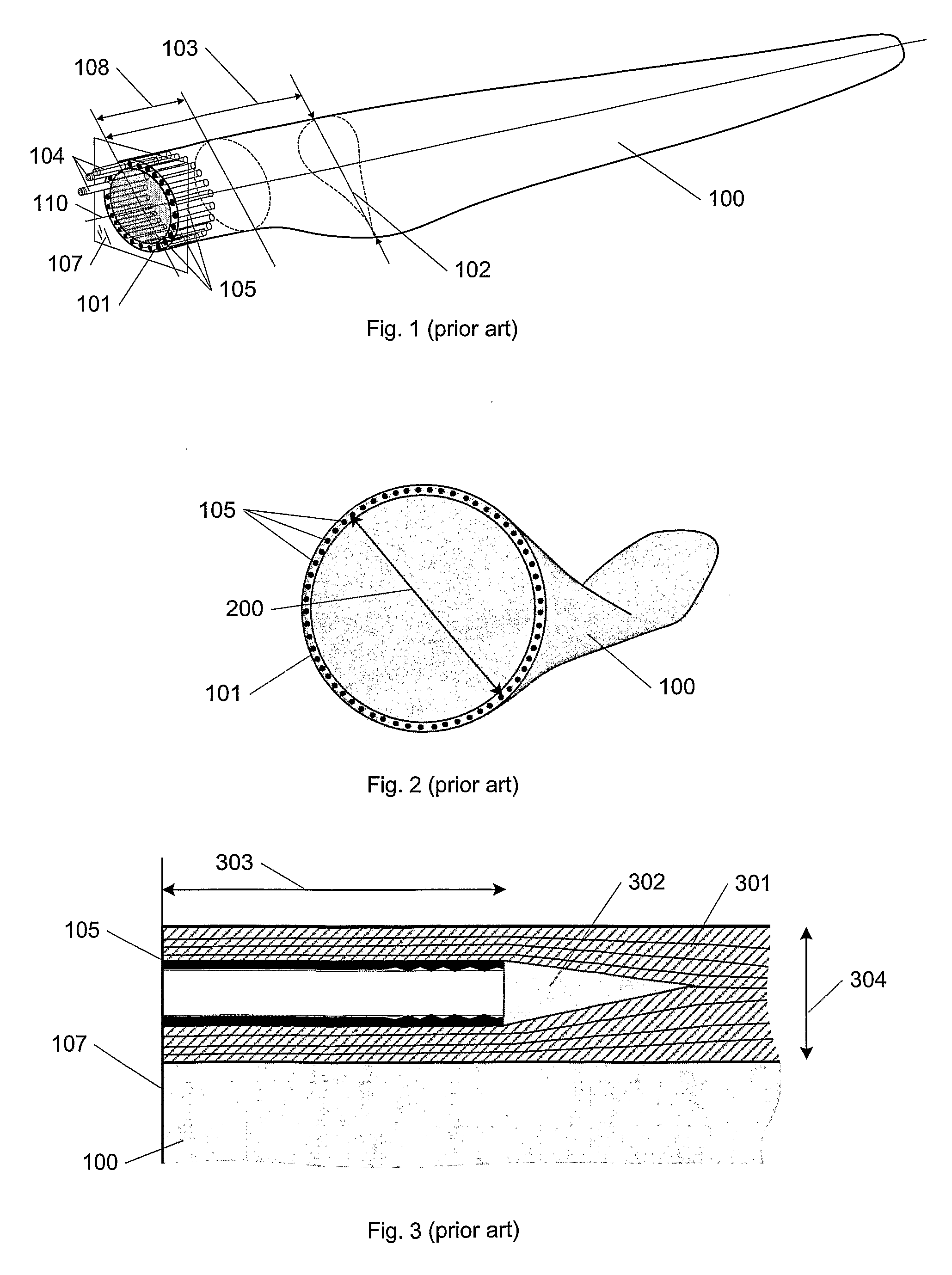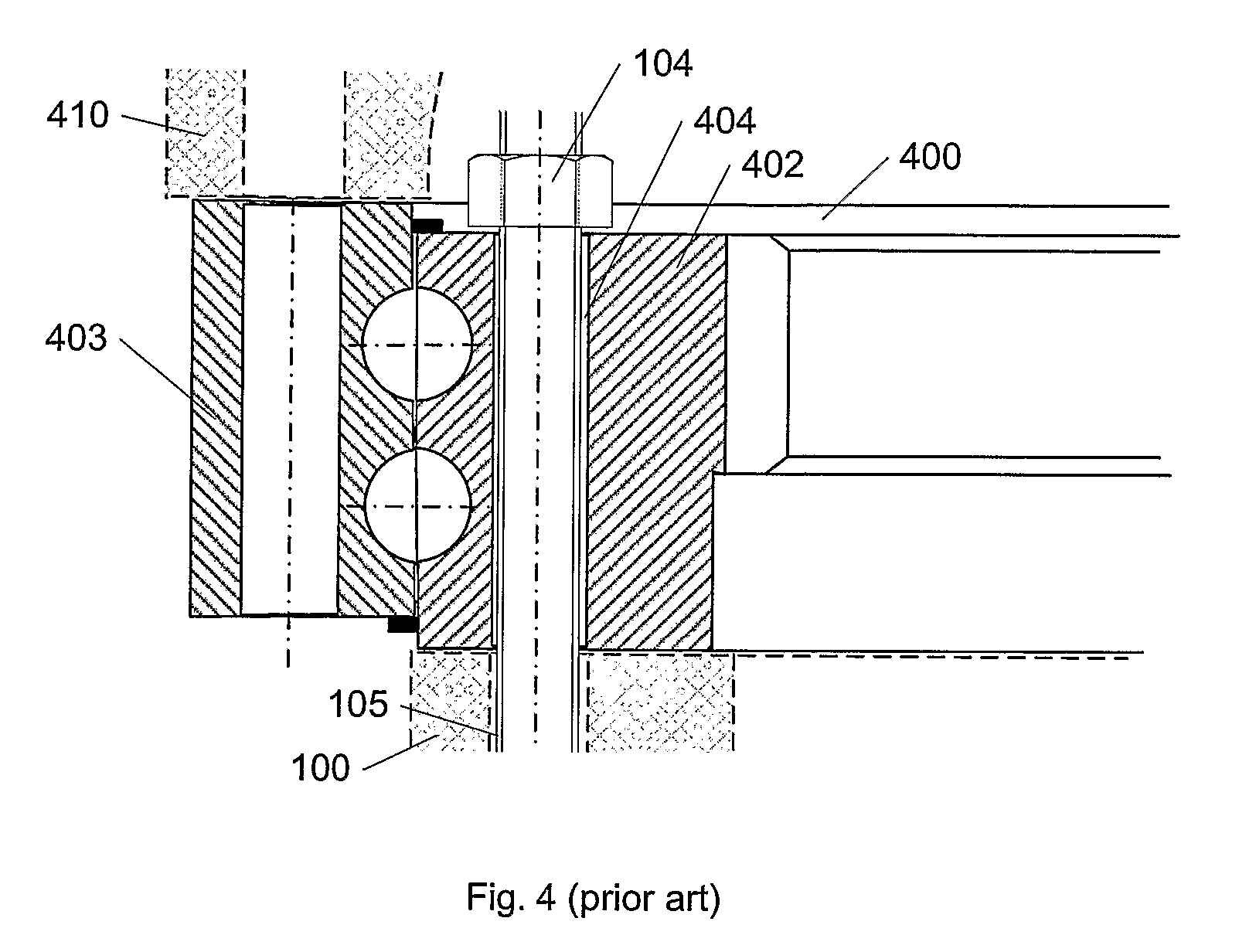Wind turbine blade and hub assembly
a technology of wind turbine blades and hubs, applied in the direction of bearing units, machines/engines, wind energy generation, etc., can solve the problems of not optimally exploiting wind forces, and achieve the effect of better wind power extraction
- Summary
- Abstract
- Description
- Claims
- Application Information
AI Technical Summary
Benefits of technology
Problems solved by technology
Method used
Image
Examples
Embodiment Construction
[0038]FIG. 1 shows, in a perspective view, a wind turbine blade 100 of which the most part is shaped according to aerodynamics to maximize the power uptake from the wind. The blade part from the root 101 to where the aerodynamical profile attains its maximum chord 102 is here and in the following referred to as the root section 103 of the blade. This section is generally shaped both with a view to aerodynamics, but also and primarily so that the blade assembly to the hub is optimally ensuring the best possible load transfer and minimal risk of damage and minimal wear of the blade, the fastening members 104 and the bearings in the hub. The blade is most often connected to the hub by a number of fastening members such as rods, studs, threaded bars and nuts, or bolts 104 (of which only a few are drawn for clarity) that are inserted into bushings 105 in the root section 103. If threaded bars are used, they might also be directly embedded into the blade laminate. The root end 101 is most...
PUM
| Property | Measurement | Unit |
|---|---|---|
| angle | aaaaa | aaaaa |
| lengths | aaaaa | aaaaa |
| rotational forces | aaaaa | aaaaa |
Abstract
Description
Claims
Application Information
 Login to View More
Login to View More - R&D
- Intellectual Property
- Life Sciences
- Materials
- Tech Scout
- Unparalleled Data Quality
- Higher Quality Content
- 60% Fewer Hallucinations
Browse by: Latest US Patents, China's latest patents, Technical Efficacy Thesaurus, Application Domain, Technology Topic, Popular Technical Reports.
© 2025 PatSnap. All rights reserved.Legal|Privacy policy|Modern Slavery Act Transparency Statement|Sitemap|About US| Contact US: help@patsnap.com



